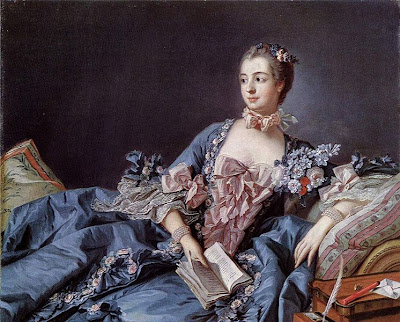. (Via
STEVE INSKEEP, host:
Every January the Royalists of France, or is it that the Royalists de France, gather to mark the date when King Louis XVI was beheaded. His death marked the beginning of the French Republic. Yet many who remember the kings death hope that France will some day restore the monarchy.
Eleanor Beardsley sends this report.
(Soundbite of music)
ELEANOR BEARDSLEY: Organ music thunders through the stone cavernous basilica of Saint Denis on the northern outskirts of Paris. More than 800 people have gathered here, not just to pay homage to King Louis XVI, but to mourn the death of the French monarchy. Saint Denis is the necropolis of the French royal family. More than 50 monarchs, including Louis XVI and his queen, Marie Antoinette, are buried here.
Unidentified Man #1: (Latin spoken)
BEARDSLEY: The mass is in Latin. The priest swings a censer of incense on a chain. The somber service in this stone-cold Seventh century church resonates with regret for a France that lived 16 centuries in the Catholic monarchy. The priest describes the day it all came to an end when Louis XVI was led to the guillotine.
Unidentified Man #2: (French spoken)
BEARDSLEY: They came at night with their torches and clubs, he says, to carry out the most abominable of sacrileges. Harold Hyman, a long time journalist who takes a special interest in the French Royalists, says the group has no chance of bringing back the monarchy.
Mr. HAROLD HYMAN (Franco-American Journalist): So they take this weird political posture - a sort of anti-progress protest against the modern world and mass culture and television and American influence, and this is, I think, what unites them all.
BEARDSLEY: Royalists say the French Revolution was ruthless, not glorious, and that Louis XVI was a progressive king with vision. After all, he did send his general, the Marquis de Lafayette, to help some unruly colonists throw off their British oppressors. Retiree Marie-Noelle Erre(ph) explains why shes a monarchist.
Ms. MARIE-NOELLE ERRE (Royalist): Its the monarchy that built the country. If it hadnt been for the revolution, there would have been an evolution with time. Beside that, King Louis XVI was a very good king.
BEARDSLEY: The Royalists are deeply divided over who is the legitimate successor to the French throne. But that question is not pertinent, for now anyway, says Dominique Emele(ph), the director of the Alliance Royale, the monarchist political party. The Royalists have practically no political support and no members in parliament, but Emele believes that one day the Party will be able to convince the French to restore a constitutional monarchy.
Mr. DOMINIQUE EMELE (Alliance Royale): (Through translator) One of the biggest problems in France today is that our president is the head of a political party. So he doesnt represent all the French. Only a king can truly represent the people, unify the nation, and solve the long-term problems of France.
(Soundbite of music)
BEARDSLEY: Back at the Basilica of Saint Denis, the mass closes with a requiem. The church where Joan of Arc once prayed now lies in the middle of a gritty immigrant suburb. Sixty five-year-old Michel Simoneaux(ph) emerges from the 18th century atmosphere inside the Basilica and comes face to face with modern day France.
Mr. MICHEL SIMONEAUX: (French spoken)
BEARDSLEY: The revolution was a cataclysm from which France will never recover, Simoneaux says. Everything we admire is from before the revolution. Just look at this marvelous cathedral, and look at this town. Its the symbol of everything France has become.
For NPR News, I'm Eleanor Beardsley in Paris.
 Katherine Lady Latimer became the last wife of Henry VIII. How was her relationship with her step-children? According to History Today:
Katherine Lady Latimer became the last wife of Henry VIII. How was her relationship with her step-children? According to History Today:









































